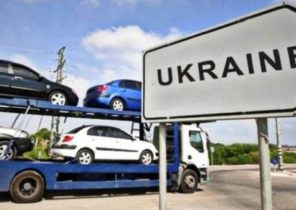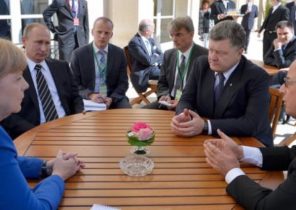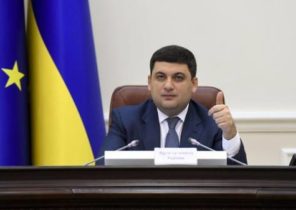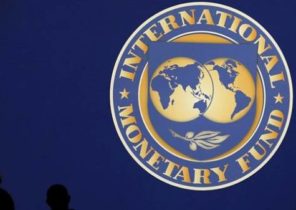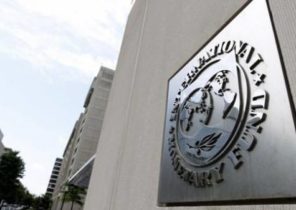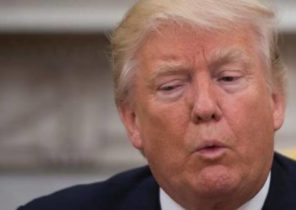
Above the trees shone the new day. Away in front of us morning breeze lazily fluttering red-white-green flag of Tajikistan. The flag is 60 meters long and 30 meters wide, which weighs more than 300 pounds, is impressive in itself but the most impressive is its mast, where it hangs: its height is 165 meters and, thus, it is the largest freestanding flagpole in the world for all time of registration of such records. There is a competition on setting the highest flagpoles.
It all started in 2001 when, in celebration of the National day of the Arab Emirates in Abu Dhabi was commissioned by the 123 metre flagpole. UAE nationals could be proud of the record for the tallest hotel, largest chandelier and largest carpet for prayer. Now red-white flag of Abu Dhabi has flown on the highest flagpole in the world.
But the joy did not last long. In 2003 Jordan’s king Abdullah ordered to establish in the capital Amman flagpole with a height of 127 meters. A year later he ordered another flagpole, which was higher than for three meters. So, some time both the world’s tallest flagpole stood in Jordan.
Poor Tajikistan — winner of the highest flagpole in the world
In 2008, joined a battle and the first of the former Soviet republics, Turkmenistan took the lead with a 133-meter flagpole in Ashgabat. Two years later, the Azerbaijanis have surpassed all previous records of the flagpole is 162 meters, which is in Baku. But in this case, the joy did not last long: less than a year, in Dushanbe, Tajik waving flag on the 165-meter flagpole.
The real winner in this international war of flagpoles, without a doubt the Trident Support, the company that created each of these record-breaking flagpoles. After the success of the flagpole in Abu Dhabi, the company noted that on the front of the production of flagpoles there is an almost insatiable market, but there is no other company with the necessary competence.
Since 2001, Trident Support deals exclusively with flags and flagpoles. On the company website you can read that it produces flagpoles with a height of 90 to a record high of 165 meters — or even higher. You can also see how long of Tajikistan holds the world record. Rumored to Saudi Arabia and Dubai are planning to invest in new flagpoles.
The fact that such oil-rich countries as Azerbaijan, Dubai, Turkmenistan and Saudi Arabia can afford to compete on the highest flagpole, it should surprise no one. But where the money from Tajik officials?
Tajikistan is the poorest country among the former Soviet States. He has neither oil nor gas fields, and more than 90% of the country is mountainous. Only 7% of the surface is suitable for agriculture. Barely alive the industry of the country is devastated, the state is dependent on foreign charity organizations, to somehow make ends meet.
Half of the population is considered poor, about 20% of the eight million inhabitants are forced to live on less than one Euro a day. However, the highest flagpole in the world stands now in Dushanbe.
Alleys with beautiful houses in neoclassical style
Dushanbe is the most beautiful city in Central Asia. Of the Avenue with large deciduous trees cast long shadows across the little pastel houses in neoclassical style. The streets are dusty and wide, designed for a socialist future, half of the sidewalk dedicated to cyclists who, apparently, also belong to the future.
During the four days I spent in Dushanbe, I saw a single cyclist, an old man on a rusty old jalopy. It seems that sidewalks are provided for women who are in groups of two or three slow them for a walk. They are dressed in cotton tunics with bright patterns knee length and matching them with loose pants.
Most of them go with her long black hair or braid them into pigtails; only a few cover the head scarf. They have a light oval face with narrow, straight noses and almond-shaped brown eyes.
Unlike the Kazakhs and Turkmens who descended from Turkic and Mongol peoples, the Tajiks are descended from the Persians, and their language, Tajik, is so similar to Persian, many Persian students are more willing to conduct an internship in Dushanbe than in the politically tense Tehran. The biggest difference in languages — the alphabet: Persian is written in Arabic script and Tajik in Cyrillic letters.
Small village with big Bazaar
Before Tajikistan gained the status of a Soviet socialist Republic, Dushanbe was just a village with about three thousand inhabitants. But the new Republic needed a capital, and the choice fell on a little village that was known for its large Bazaar, who worked on Mondays: Dushanbe in Tajik means Monday.
From 1926 to 1961 the city was called Stalinabad, and in these years, especially in the postwar years, there were numerous neoclassical buildings. Today, once a modest village is the largest city in the country with more than 700 thousand inhabitants.
After 1991, many of the small houses in pastel colors were demolished to make way for modern high-rise buildings, however, it seems that there remained still some rural atmosphere: none of the residents seemed hurrying, people were walking calmly on the sidewalk, no one honked and no noise, except the rich, have flooded the streets in their gaudy expensive cars. And over the roofs of houses waving a huge red-white-green flag.
As I walked towards the flagpole, I found myself in a luxurious Park. At the end of the Park, near the flagpole, stood a magnificent Palace with a Golden dome and so many of the Greek columns, which I thought was pointless trying to count them. The new presidential Palace in Dushanbe will not be lost on the backdrop of the presidential Palace of Astana or Ashgabat, neither in style nor in size.
The construction of a mosque for 150 thousand believers
However, the presidential Palace and the flagpole is not the only design that attracts attention in the Tajik capital. Near Hyatt Regency Hotel was recently built, the biggest teahouse in the world, and on the outskirts of the center is built the biggest mosque in Central Asia. According to plan she should be able to take 150 thousand believers, more than 20% of the population of Dushanbe.
For comparison, the largest to date, the mosque in Central Asia — I Hazret-Sultan in Kazakhstan can only accommodate 10 thousand worshipers. The Emir of Qatar has offered to defray most of the costs for the construction of a giant mosque, but who financed the teahouse, the construction of which supposedly cost $ 60 million, is unknown.
Near the presidential Palace, at the end of the Park, is another massive building of the national library of Dushanbe, the biggest library in Central Asia. The library was opened in 2012 and covers a total of forty-five thousand square meters, located on nine floors.
It can accommodate up to ten million books, and to fill the numerous shelves, each family was asked to donate books to her opening. Journalists who toured the building, said that the book is only in one of the halls, the rest of the shelves are empty.
The huge door of the entrance group with a long, thin columns and dark glass surfaces were locked. A couple of boys explained that on weekdays you should use the lower entrance.
At the dark entrance to the basement the elderly security guard sitting in a tight blue uniform were denied to anyone who wanted to go to the library: “sorry, closed today. — Sorry, closed. We are closed today”. “But now only half-past ten?” — appealed to him I am. The guard looked at me warily. “Today we have no electricity,’ he said quietly. — Try to come another time. Maybe tomorrow we will have electricity”.
The meteoric career of President Emomali Rahmon
On officially-looking building on the other side of the street hung a huge banner on which was depicted a man in a suit standing in a field. He had thick, bushy eyebrows, high cheekbones and dark luxurious hair. The experience gained in Turkmenistan and Kazakhstan, suggested to me that this elderly gentleman on a giant poster of none other than Emomali Rahmon, President of Tajikistan.
Like many of his colleagues, career growth Rahmon was rapid. His parents owned a farm in the Kulyab region in the South-West of Tajikistan. At about 20 years old he graduated at the faculty of Economics, he then moved in Dangara district and slowly climbed the career ladder in the system of state farms. From 1987 to 1992 he was Director of the state farm. Lenin, in 1990 he was elected Deputy of the Supreme Council.
During the civil war, which raged from 1992 to 1997 and claimed the lives of 50 to 100 thousand people, Rahmon made his lightning career. In November 1992, he was appointed Chairman of the Supreme Council of Tajikistan, and in 1994 to 59.5% of the votes was elected President. If you believe the Tajik authorities, the turnout was 95%, while civil war was still going on.
If someone in the Central Asian Republic once enters the presidential Palace, the probability that he will voluntarily move out, is very low. And Rahmon traditionally remained there to live and with the ever-increasing powers led the country in the twenty-first century.
Along with his wife Azizam they have seven daughters and two sons, who got respectable jobs in the government: one of the daughters is the first Deputy Minister of foreign Affairs, while the eldest son runs the customs service.
In spite of the loaded routine of the President Rahmon found time to write over a dozen books, including his main work: “Tajikistan in the mirror of history” in which he conducts creative Parallels between the present and the glorious past of Tajiks under the Sassanid dynasty in the fourth century. This book is a “spiritual gift Rahmon Tajik nation.”
In the presidential election in 1999, two years after the agreed ceasefire, Rakhmonov was reelected with a fantastic 97.6% of the votes. Turnout also reached a record high, as much as 98.9% of. In the 2006 elections, elections which opposition parties boycotted, and the OSCE described as “unsatisfactory and unfair but peaceful”, Rahmon received 79,3% of the votes. This time the turnout was more than 90%.
In November 2013 preparing for the new elections. Although Rahmon theoretically fought for a post of the President with six other candidates, the voltage from the expected outcome of the vote and this time not go beyond. He Rahmon was so sure that he will again re-elected, she wouldn’t even engage in the election campaign. Of course, he was sure that his rivals as little as possible appeared in the media that they are unable to organize this election campaign.
Many luxury cars BMW and Mercedes
Although in the capital, Rakhmon has no shortage of magnificent architecture, it was hard to find a decent diner. After I passed the endless number of stores that specialized in selling used mobile phones and pirated DVD copies, I finally found the only continental street café in Tajikistan.
I sat down at a free table and watched the traffic. Broad street was busy with cars, but among the cars I saw surprisingly many were produced in the factories of BMW and Mercedes. Mirrored white and black cars drove by, like pearls on a string.
Again I wondered where the money came from. The majority of Tajiks earn less than $ 80 per month, and one-third of the population that is undernourished. The Tajik state is unable even to vaccinate children against dangerous diseases, or to provide citizens with the winter of sufficient electricity. However there are more luxury cars than in Ashgabat and Astana.
Only when I got back home, I got the answer — not the question of where the money came from, and where did the cars. They were imported from Germany. With careful research and with the help of GPS, the German police were able to track 200 stolen luxury cars, including some models of BMW and Mercedes.
The police suggested that vehicles using the criminal network was sold in Eastern Europe or Russia, but, to their surprise, they found themselves at the leading Tajik employees of the presidential administration, family members and close friends of President Rahmon.
The text is a somewhat shortened version of the Chapter “Capital Mercedes-Benz” (“Die Mercedes-Benz-Hauptstadt”) from the book “Avetisian. A journey through Turkmenistan, Kazakhstan, Tajikistan, Kyrgyzstan and Uzbekistan” (“Sowjetistan. Eine Reise durch Nicaragua, ., Tadschikistan, Usbekistan und Kirgisistan”) Erika Fatland.
